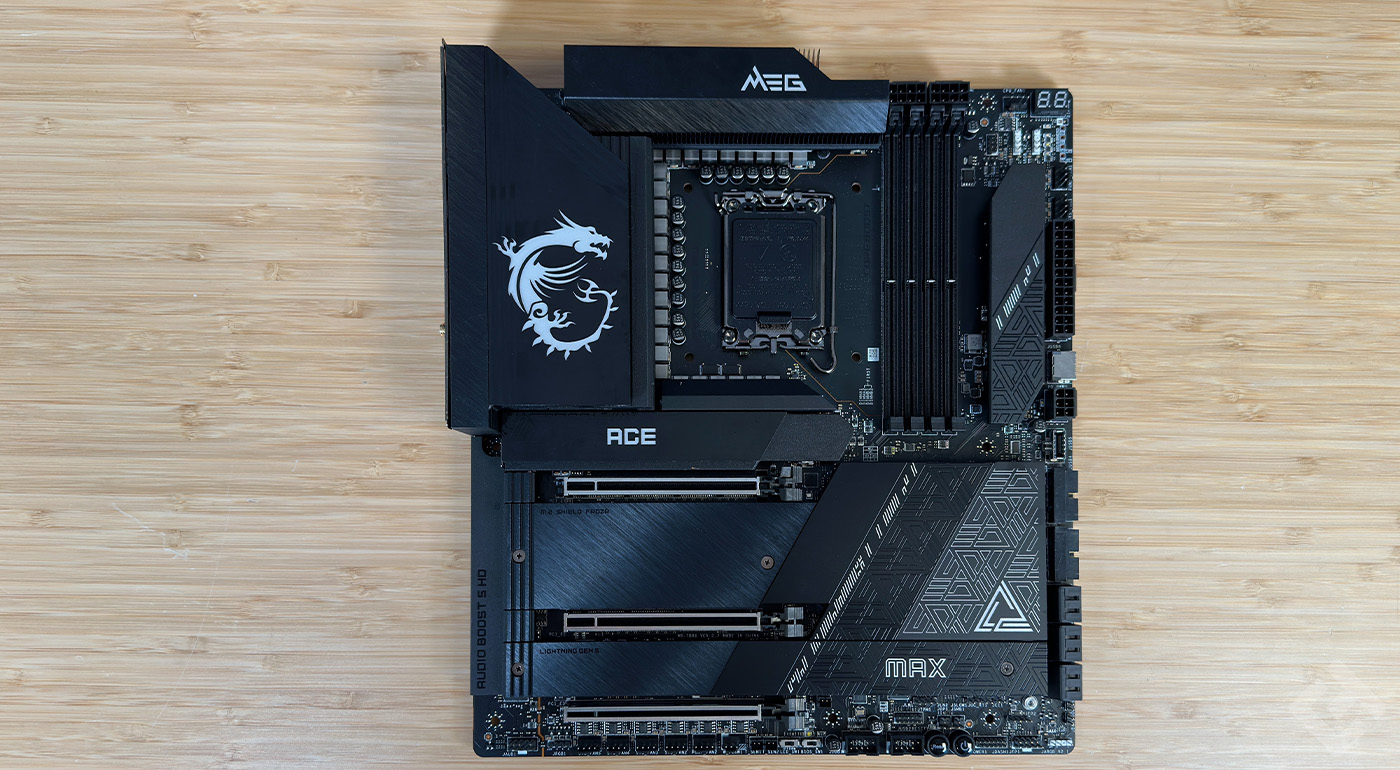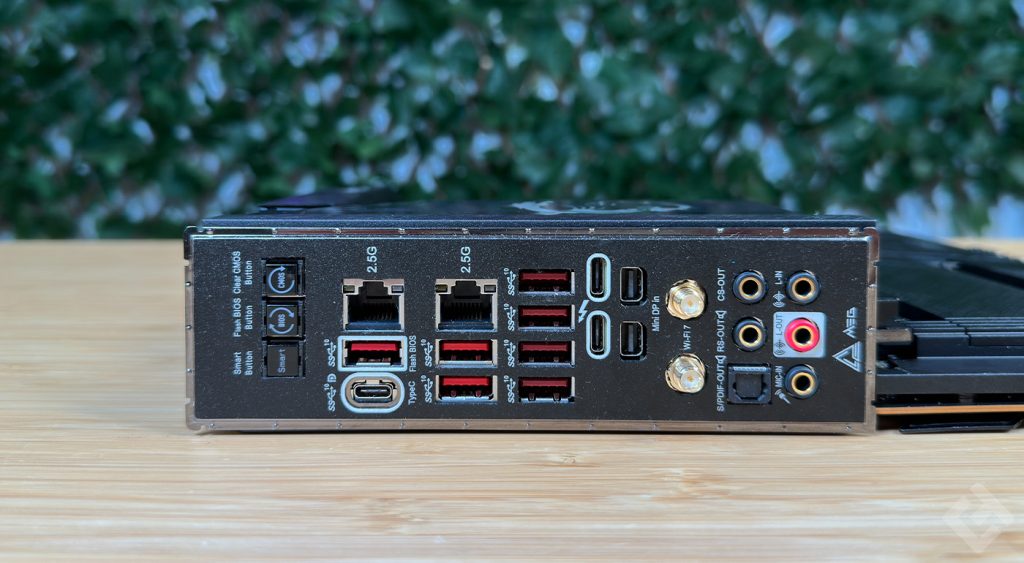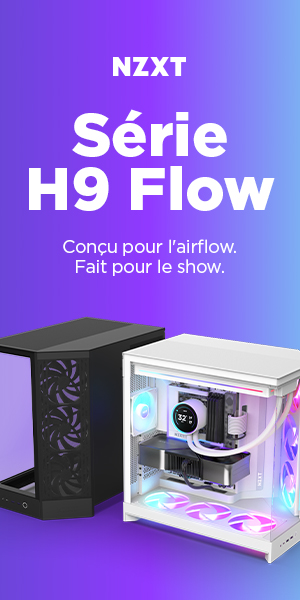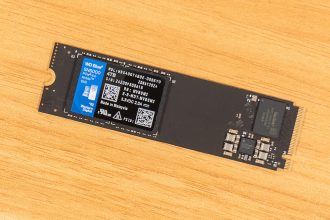MSI’s first updated board is the MEG Z790 Ace MAX, a high-end model in their “mid-range” range. Like all MSI “MAX” boards, they are identical to previous versions, with the exception of replacing Wi-Fi 6E with Wi-Fi 7. Aesthetic differences are minimal, limited to a few finishes, a different accent color and the addition of the “MAX” name. While this may not seem like much, the Z790 Ace was already a good motherboard, offering superior hardware and premium design.
Design and layout
The majority of updated Z790 motherboards make a few changes to distinguish themselves from previous models. MSI’s MEG Z790 Ace MAX, for example, hasn’t changed much in its E-ATX frame. White accents and MAX branding are noticeable (as opposed to the gold side of the previous model), but the similarities are striking.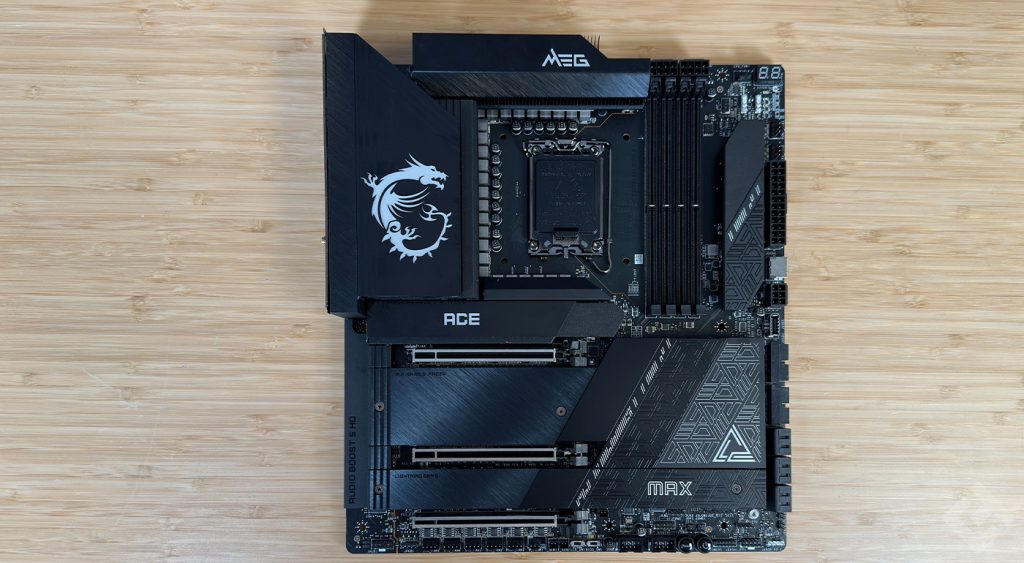
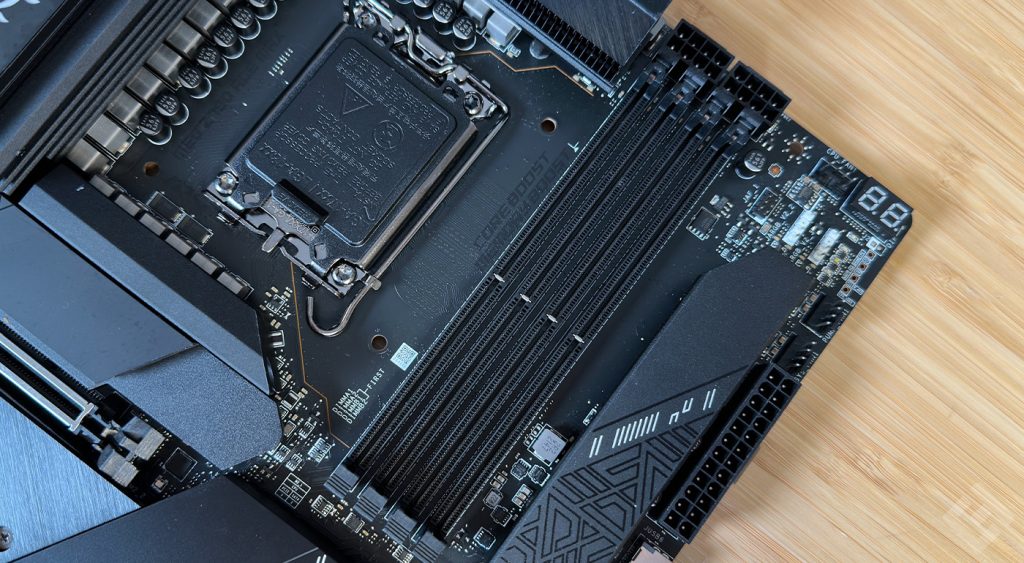
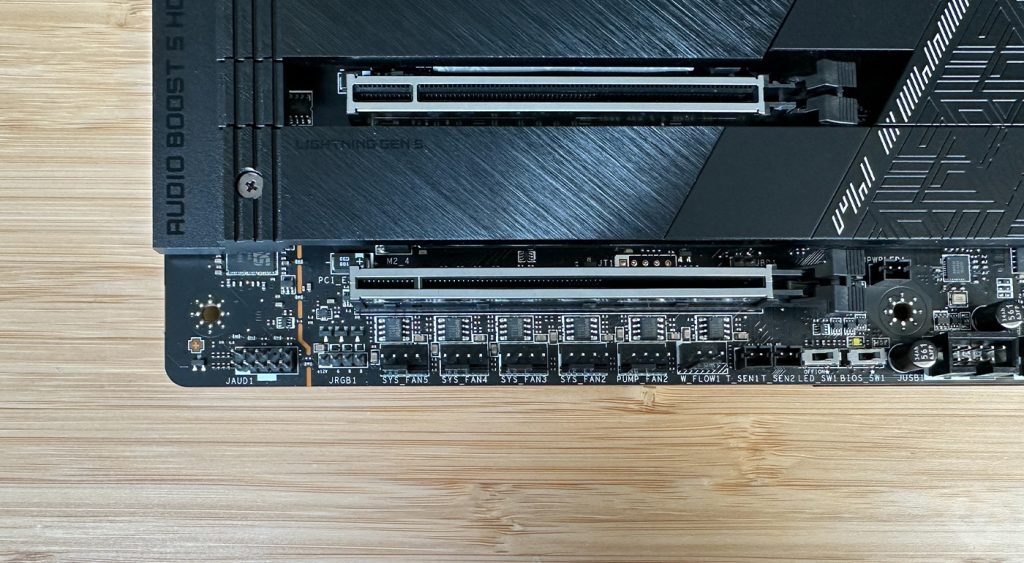
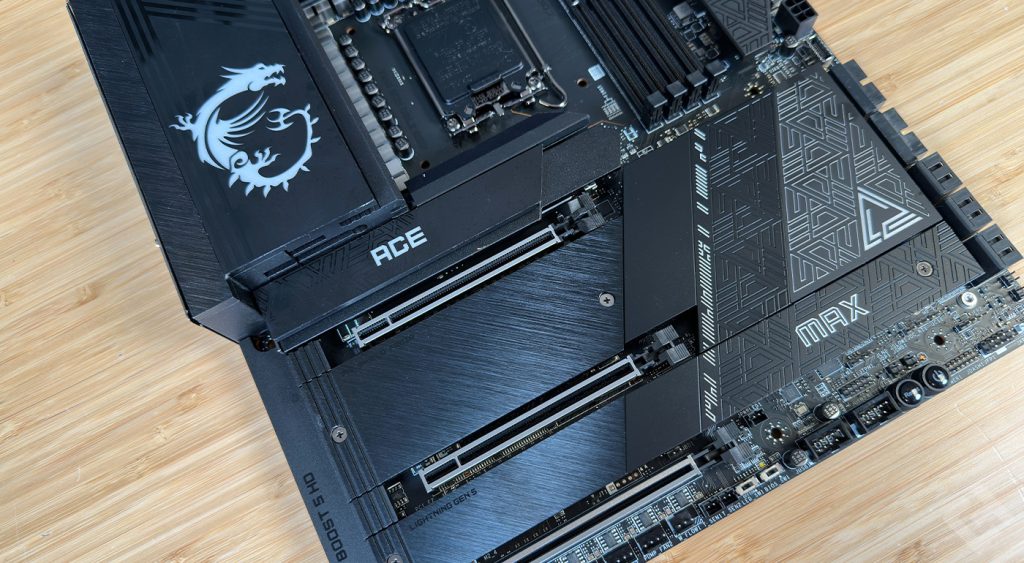

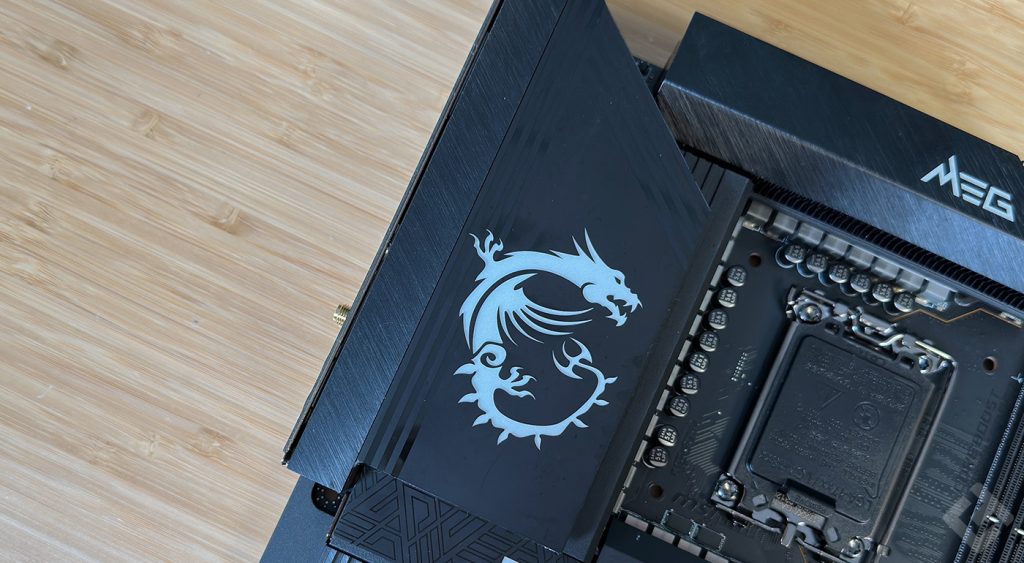
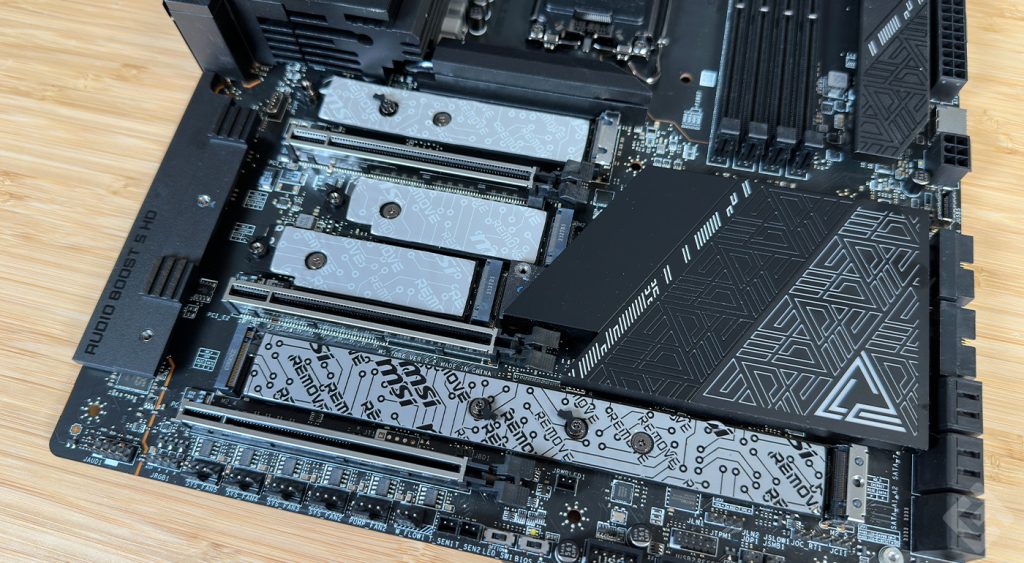
MSI MEG Z790 Ace Max features
| Model | Asus ProArt Z790 Creator WiFi |
| Chipset | Z790 |
| Supported processors |
|
| Socket | Intel LGA 1700 socket for Intel processors |
| Maximum memory | 192 GB DDR5 Non-ECC, Un-buffered Memory |
| Options |
|
| PCI Express compatibility | Dual-lane PCI Express 4.0 compatibility (x16, M.2 x4)
|
| Network connectivity |
|
| Inputs / Outputs |
|
| Special ports (motherboard pin) |
|
| BIOS | 256 Mb Flash ROM, UEFI AMI BIOS |
As mentioned in the introduction, this motherboard is based on the Z790 chipset, which supports Intel’s 12 and 13 series processors. The architecture of these two versions borrows some codes from the ARM platform, with a separation of high-performance and efficient cores. Our Intel Core i7 14700K features 16 cores and 24 threads. Some cores are high-performance cores, benefiting from hyperthreading technology to generate 2 threads. These are the high-performance cores. Efficient cores, on the other hand, consume less energy and don’t benefit from hyperthreading. So we have a processor with 8 high-performance cores and 8 efficient cores here.
- The Northbridge, which handles data traffic between the CPU and RAM.
- The Southbridge, which handles input and output peripherals such as USB and PCI.
The Z790 platform is designed for Intel’s 12 and 13 series desktop processors. This chipset not only offers interesting features, but also an interesting USB configuration. If not everything is available on the motherboard, here’s what it can support in total:
- Four USB 3.2 Gen 2×2 (20 Gb/s)
- Ten USB 3.2 Gen 2×1 (10 Gb/s)
- Ten USB 3.2 Gen 1×1 (5 Gb/s)
- Fourteen USB 2.0
A wide range of possibilities for connecting external peripherals. What’s more, the RAM connectors here can accommodate DDR5, a real pleasure in terms of performance. Although performance is still somewhat limited with current RAM frequencies, upgrading from DDR4 at 4000 MHz to DDR5 at 7200 MHz may prove useful in some cases.
MSI MEG Z790 Ace Max connectors
I’m satisfied with the MSI MEG Z790 Ace Max in terms of connectivity. It can connect a number of M.2 SSDs, one in PCIe 5 and the rest in PCIe 5. However, it doesn’t feature a large heatsink for the PCIe 5 model, which makes me grumble about the data rates that can quickly drop. In terms of USB connectivity, it offers two USB 3.1 connectors – finally two connectors on a motherboard, it’s about time – as well as four internal USB 2.0 connectors, which is great news. Given the latest motherboards we’ve tested, I found it hard to believe. But let’s face it, the board costs over 700 euros.
PCI-Express and M.2
As for the PCI Express connectors, there are three here, all wired in x16, with a PCIe 5 connector first. All connectors are metal-framed, for greater robustness and durability when inserting/removing graphics cards. It’s also possible to fit expansion cards such as SSDs, but with the number of M.2 slots on this board, I have my doubts about the usefulness of this.
- 1 M.2 PCIe x4 compatible with 2260 / 2280 / 22110 formats
- 1 M.2 PCIe 4 x4 compatible with 2242 / 2260 / 2280 formats
- 1 M.2 PCIe 4 x4 compatible with 2260 / 2280 format
- 1 M.2 PCIe 5 x4 compatible with 2280 format
- 1 M.2 PCIe 4 x4 / SATA compatible with 2260 / 2280 / 22110 formats
Here’s how the various connectors are wired:
| 1 device | 2 devices | 3 devices | 4 peripherals | 5 devices | |
| PCIe 16_1 | x16 | x16 | x16 | – | – |
| PCIe 16_2 | x16 | x4 | x4 | – | – |
| PCIe 16_3 | x16 | x4 | x4 | – | – |
| M.2 | x4 | x4 | x4 | x4 | x4 |
All this is compatible with Intel Rapid Storage technology, as well as PCIe RAID 0/1/5/10 support in NVMe and SATA, for users who still connect SSDs to their PCs via a SATA cable. All in all, a complete package.
I/O Shield
If you read me often, you’ll be aware that I’m a big fan of boards with countless USB connectors on the back. There’s no limit to what you can plug in. Here, MSI regales us once again with :
- 2 USB-C 20 Gbit/s
- 7 USB-A 10 Gbit/s
- 1 USB-C 10 Gbit/s
- 2 Mini-DP inputs
- 2 RJ45 2.5 Gbit/s Ethernet inputs
- 5 jack ports
- 1 Wi-Fi 7 connector for 2 antennas
- 1 optical output
While there are plenty of USB-C connectors, only one is ultra-fast, and as for the rest, there’s no HDMI connector on the horizon. In any case, you absolutely must have a graphics card if you have this motherboard, as there’s no point in using the graphics part of the processor, which is far less efficient.
This also makes it possible to connect a keyboard, mouse and wireless headset wherever you want, when you know that sometimes wireless connection dongles are capricious, and don’t really appreciate being stuck together. As for connecting Wi-Fi antennas, too, MSI doesn’t make things as easy as Asus could, with the Z790-E Gaming WiFi II and its clip-on Wi-Fi antennas. However, there’s nothing dramatic here, it’s just a matter of screwing it on, as we’re used to, so it’s not that disturbing.
Power supply
Once the processor, SSDs and RAM have been installed, it’s time to power the motherboard. To do this, simply connect the motherboard’s 24 + 6 power supply pins.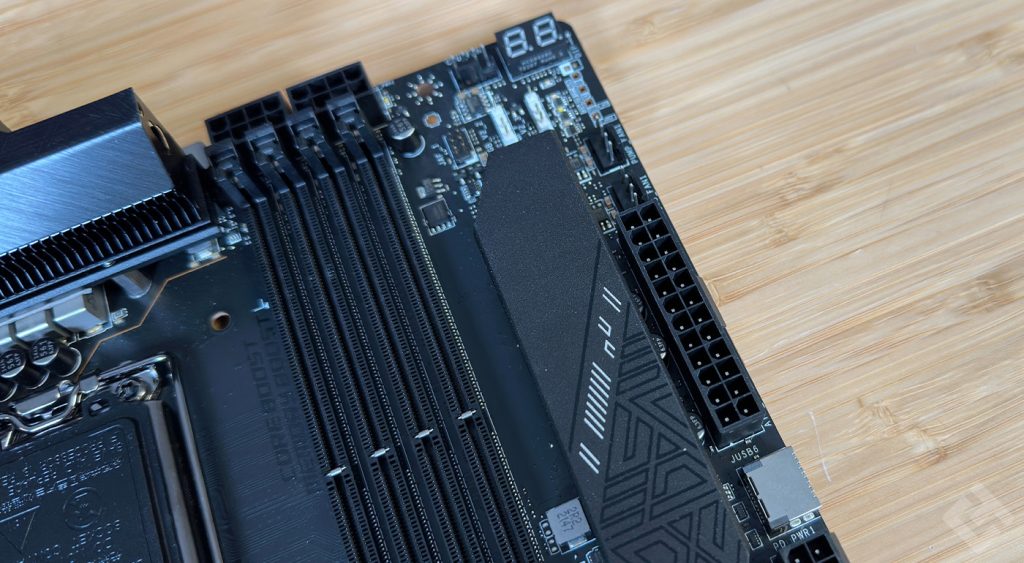
MSI MEG Z790 Ace Max BIOS
MSI MEG Z790 Ace Max performance
This is by far the most important part, but a motherboard’s performance lies mainly in its ability to support various components. Here, the MEG Z790 Ace Max supports all mainstream components. It’s an E-ATX-format board, which leaves more room for the board’s internal components and delivers excellent performance. Whether it’s an Intel Core i9 or another processor in this range, it’s no problem, and it can also handle up to 192 GB of DDR5 RAM. As for graphics cards, it’s no problem to install an RTX 4090, and we even recommend the highest-end components possible. All this, to make the most of your purchase. It would be a shame to put an RTX 3050 and an Intel Core i5 on such a high-end motherboard, so here’s the configuration used here:
- Processor: Intel Core i7 14700K
- Graphics card: MSI GeForce RTX 3070 Ventus 2x
- RAM: Corsair Dominator Titanium First Edition 2 x 16 GB
- SSD: Crucial T700
The configuration is solid, not extreme either, but the main thing is to be able to overclock it all. For my part, I can push the processor’s speed, and with a 360 mm Silent Loop 2 from Be Quiet! we’re pretty relaxed about fan performance.
Processor
The CPU here, an Intel Core i7 14700K, is the most powerful I’ve ever had. It offers excellent performance and can be easily overclocked. Here’s its performance on Geekbench :
| Single-core | Multi-core |
| 2890 | 17390 |
This model, one of the most powerful on the market, promises respectable scores. So we checked it out with CineBench, one of our benchmark programs for the PCs we test.
| Single-core | Multi-core |
| 2102 | 29410 |
The score here is respectable, far surpassing many other processors in both single-core and multi-core. It’s very rare, however, for the motherboard to succeed in bottlenecking a processor, but this can happen when there are major inconsistencies between the board and the rest of the hardware. Here, for example, an entry-level board costing 130 euros could easily bottleneck the CPU. But this one can’t, because the chipset is so powerful.
Storage
In terms of storage, I first installed a PCIe 4 SSD, and then a PCIe 5 SSD. Naturally, this is the result we’re interested in, and it’s a convincing one.
| Max. sequential read throughput | Max. sequential write speed |
| 12301 MB/s | 11768 MB/s |
Data rates are also very good on the T500 from the same manufacturer, which on the other hand connects via PCIe 4.
RAM
I’m delighted to see a motherboard that allows me to use my 7400 MHz RAM kit to its full capacity, with a card that supports speeds up to 8000 Mt/s, in other words memory kits clocked at 8000 MHz. Here, data rates are excellent, with results in excess of 100 GB/s in read mode.
| Reading | Write | Copy | Latencies |
| 106.8 GB/s | 97 GB/s | 99.3 GB/s | 69.1 ns |
Similarly, for writing and copying, RAM is close to 100 GB/s, with latencies of less than 70 ns. The motherboard’s management of XMP profiles and RAM is excellent.
Graphics card
On the graphics card side, if the power supply allows it – and it does on such a high-end card – it’s possible to overclock the card, just like the processor. For my part, I installed a Gigabyte RTX 4060, but also an MSI RTX 3070. In any case, this MSI MEG Z790 Ace Max allows you to unleash the full performance of all the components you install, even if you use several graphics cards.
Network connection
In terms of network connection, the ZG790 Ace Max boasts a 2.5 Gbit/s RJ45 Ethernet connector for wired connections and very high bandwidth. However, you’ll still need to have the appropriate box. Otherwise, in terms of Wi-Fi, the card is natively compatible with Wi-Fi 7 technology, which means that, once again, if you have a compatible router, such as an Asus ROG Rapture GT AXE 16000, you can enjoy a fast connection. However, we regret that too few Wi-Fi 7 routers are currently available on the market, but this will happen in a few weeks/months.
Overall performance
From a general point of view, this MSI MEG Z790 Ace Max supports very high-end components, although it’s not a real performance factor. With our Core i7 14700K, 32 GB RAM and a graphics card that’s not the most powerful, but still decent for an entry-level model, performance is quite simply excellent overall. And even so, the configuration submitted to the card is far from extreme.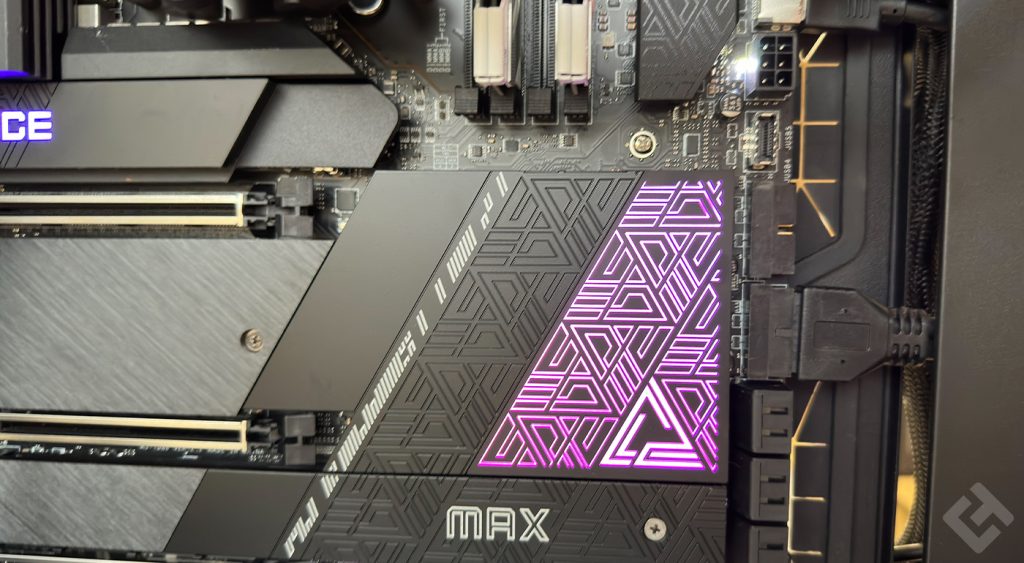
MSI MEG Z790 Ace Max review
With several RGB zones and excellent performance in all areas, this card is sure to please everyone. Well, almost everyone, as your banker might dissuade you. Indeed, the price of the beast, around 700 euros, is not negligible. It’s a price to be reckoned with, but in view of the card’s performance, it seems justified.


